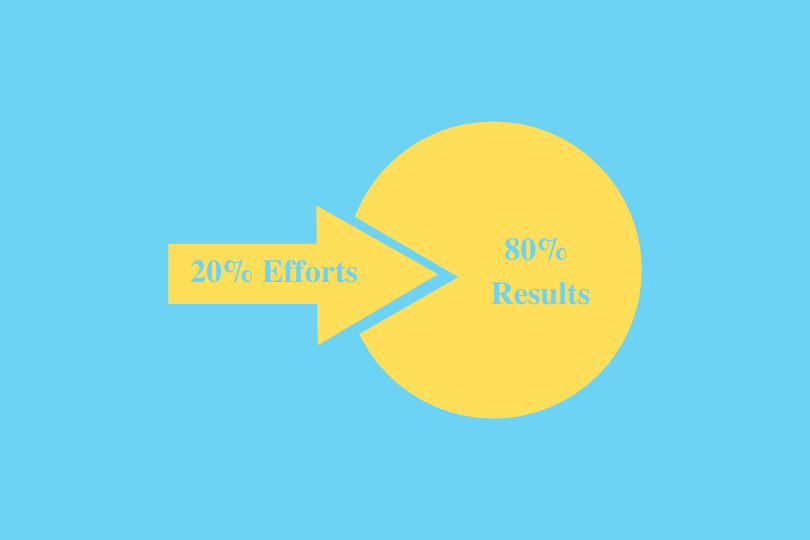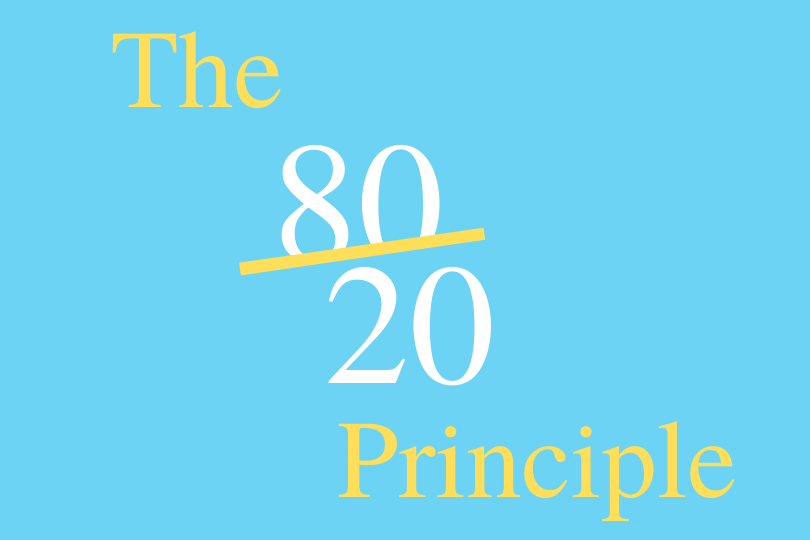Marketing, in general, is a term given to activities carried out by brands and companies to promote their brand image, products, and services. It helps businesses establish a healthy and positive image about their brand, which creates awareness, and helps people remember the brand. There’s no other way for brands to create a buzz about their brands unless they market it effectively. Marketing is an important aspect especially with the rise in online marketing. Having an online presence is important to businesses like breathing is important for humans. A very famous marketing principle is the 80/20 marketing rule, otherwise known as the Pareto Principle.
What Is The 80/20 Pareto Principle?
The 80/20 marketing rule or the Pareto Principle is a marketing concept which highlights that 20% of your efforts should reflect 80% of the results. Businesses aim to put in 20% of their efforts to yield desired results which add up to 80%. In business terms, they use the 80/20 marketing rule to identify the type of efforts and input that can generate more results or ROI. For example, imagine a business that creates a strategy to market their brand using different marketing channels. At the end of the month, the brand studies the yielded results and picks the marketing channel which proved to be the most fruitful. The next time, the brand will put emphasis on the most effective marketing channel, invest money, and put time in it to yield the desired results. The Pareto Principle is all about making the right marketing strategy your top priority. Marketers might think the principle only applies to marketing; however, the rule can apply to other business aspects and situations. Some common examples can be spending on grocery, revising for exams, personal financing, identifying problems to work out solutions, etc. It can even be applied to personal and real-life situations. Now, when you read the word “rule,” it doesn’t mean brands have to abide by it – it’s not a law. In fact, the rule can be applied in different variations like 70/30 or 60/40. It depends on what works for you the most. As much as the marketing rule is effective, there are still some misconceptions that are tied to the concept. Some brands and marketers interpret the 20% effort as the only important aspect to focus on; which is wrong. Yes, the 20% effort + 80% results add up to a perfect 100%, but the rule doesn’t suggest that your entire focus should only be about the 20% of inputs yielding the 80% results. The rule simply means giving your 100%, but working on the 20% efforts that prove more fruitful. For example, just because your brand is attracting more traffic through Facebook, doesn’t mean you take down your Instagram, LinkedIn, or Twitter accounts. This is because Facebook marketing won’t always yield 80% of the results, sometimes the other channels will work better than Facebook.
The History Of The 80/20 Pareto Principle
The 80/20 marketing rule was a concept recognized by Vilfredo Pareto, an Italian economist who introduced it in the year 1906. His idea behind the principle was quite different than how brands use the principle today. In his Pareto analysis, he recognized that 80% of Italy-based properties were owned by only 20% of the population meaning only 20% people were wealthy enough to own 80% of the land. Later Pareto expanded his concept and realized that 80% of the peas that came from his garden were due to the 20% of the pea pods. The concept was then applied by Dr. Joseph Juran who used it to understand that 80% of the product failures were due to 20% of the problems faced in production. Then he deduced that if focused on fixing those 20% of problems, he could improve his production thus enjoying a much better output. He phrased this phenomenon as “the vital few and the trivial many.”

Benefits Of The 80/20 Pareto Principle
One of the most significant advantages of applying the Pareto Principle is it reduces the amounts of efforts a business or individual needs for great results. This eliminates the need for putting the same time, effort, and money in every strategy, instead you put it where it’s needed the most and then work your way through it. Another way of implementing the strategy is by recognizing the flaws in your strategy, then focusing on the solutions to make it work. If you can solve the 20% flaws of your strategy, you can definitely get more out of your strategy.
Drawbacks Of The 80/20 Pareto Principle
With great benefits, come some drawbacks and the Pareto Principle has some of its own. Pareto came up with the principle to analyze the distribution of wealth and population, which means the rule isn’t concrete. You won’t always find that the 80/20 rule applies to you, in some cases it could be 50/50, 60/40, or even 70/30. Pareto didn’t come to the conclusion without an observation. So, knowing what percentage applies to your business will require a keen observation which makes the 80/20 marketing rule slightly unreliable.

Application Of The 80/20 Pareto Principle
There have been numerous studies which indicate that multi-tasking isn’t productive and the 80/20 rule helps businesses cut that effort in half. Like I said, your efforts and money should be directed on things that work for your business. The key here is letting go of what doesn’t work for you. With that said, it doesn’t mean that just because 80% of your sales are fueled by 20% efforts, you ignore the other 80% efforts or if serving to 20% customers gets you 80% of revenue you neglect the other customers. The 80/20 marketing rule is just a concept which helps you allocate your resources as needed for the best results. A great example of using the 80/20 marketing rule was shared by Microsoft. The world-renowned company applied the principle on bug fixes. They found that if they focused on 20% of bugs that impacted the software greatly, they would be able to fix 80% of the other bugs and errors. As a project manager, you can apply this rule to your workforce. Like identifying that when you utilize 80% of your time, you get 20% of the work done – which is a concern and you should work on it. As a famous blogger, you can use the principle to understand what 20% of your content is getting 80% of the views and emphasize on that more than the other type of content you share. You can analyze if your Instagram marketing is getting more results or Facebook. Another great application is for the human resources department. You can use it to analyze how much percentage of your workforce is applying for sick leaves in a month or year. Here, let’s look at a real-life example of an explainer video production company. Let’s say the company offers the production of multiple types of marketing videos. The most popular choices include, 2D animation, whiteboard, infographics, live-action, 3D, etc. They focus on all the video types and make sure to deliver their best. The company has a dedicated video editor for every kind of video it produces. The owner starts to notice that 3D animated video types are more demanded as compared to any other; however, work is piling up.





1 Comment
The Pareto Principle has always fascinated me, and I love the examples and suggestions you’ve shared here. You’ve given me some great ideas that I can apply to my own marketing activities, especially blogging.